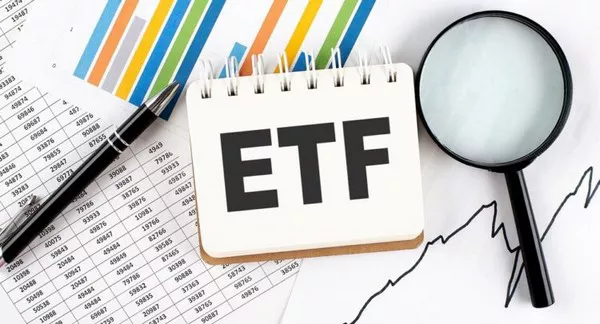Investors seeking steady income often turn to dividend exchange-traded funds (ETFs), and XLE, a well-known ETF, has been gaining attention for its remarkably high dividend yield. But what exactly contributes to the impressive XLE dividend? In this article, we will explore the underlying factors that drive the remarkable dividend yield of XLE. From the composition of the ETF to the sectors it covers, we will dissect each aspect in detail to provide you with a comprehensive understanding of why XLE’s dividend is so high.
Let’s delve into the key reasons behind this financial phenomenon:
1. Sector Selection and Composition
One of the primary factors influencing XLE’s high dividend is its sector selection and ETF composition:
Energy Sector Dominance: XLE, the Energy Select Sector SPDR Fund, primarily invests in energy-related companies. The energy sector, known for its historically high dividend yields, significantly contributes to XLE’s overall dividend.
Dividend-Paying Stocks: XLE includes a selection of energy companies with strong dividend track records. These companies consistently distribute a portion of their profits to shareholders, leading to the high dividend yield of the ETF.
Diversification: XLE’s diversified portfolio spreads risk across multiple energy sub-sectors, reducing the impact of poor performance in any single area.
2. Energy Market Dynamics
The dynamics of the energy market also play a crucial role in determining XLE’s dividend yield:
Oil and Gas Prices: XLE’s performance is closely tied to the prices of oil and gas. When these prices rise, the profitability of energy companies generally improves, allowing them to distribute higher dividends.
Global Demand: Global demand for energy remains relatively consistent, providing a stable revenue stream for companies within XLE’s portfolio.
3. Dividend Payout Policies
XLE’s dividend yield is influenced by the dividend payout policies of the companies it holds:
Payout Ratios: Companies with low payout ratios retain more earnings for growth and dividends, potentially leading to higher dividend payouts.
Dividend Growth: Companies that consistently increase their dividends over time attract income-seeking investors, which can further boost XLE’s yield.
4. Economic Factors
The broader economic environment can impact XLE’s dividend yield:
Interest Rates: In a low-interest-rate environment, high dividend ETFs like XLE become more appealing to investors seeking income.
Economic Conditions: Economic stability can positively affect the profitability of energy companies and their ability to pay dividends.
5. Historical Performance
XLE’s historical performance and its ability to maintain high dividends can also influence investor sentiment:
Consistency: XLE’s ability to consistently deliver a high dividend yield over time enhances its reputation among income-focused investors.
Total Return: Investors may be attracted to XLE not only for its dividends but also for its potential total return, including capital appreciation.
Conclusion
In conclusion, XLE’s high dividend yield can be attributed to a combination of factors, including its sector focus on energy, the dividend policies of the companies within its portfolio, energy market dynamics, economic conditions, and historical performance. It’s important for investors to recognize that investing in high dividend ETFs like XLE carries risks, and past performance does not guarantee future results.
Before investing in XLE or similar high dividend ETFs, investors should conduct thorough research, consider their investment goals, and consult with a financial advisor if needed. By understanding the factors contributing to XLE’s high dividend yield, investors can make informed decisions and incorporate it into their investment strategy to meet their income and growth objectives.
FAQs about why is iep dividend so high
Q1: What is IEP, and why is its dividend so high?
IEP stands for Icahn Enterprises L.P., a diversified holding company with investments in various industries. Its high dividend can be attributed to several factors, including its strong financial performance, strategic investments, and dividend policies.
Q2: How does IEP maintain such a high dividend yield?
IEP maintains a high dividend yield by consistently generating profits, keeping debt levels manageable, and having a reliable cash flow. Additionally, its strategic investments and acquisitions contribute to dividend stability.
Q3: Does IEP’s sector play a role in its high dividend yield?
Yes, IEP’s sector selection is vital. It often invests in sectors with historically high dividend yields, such as energy and real estate, which contribute to its overall high dividend.
Q4: What is IEP’s dividend payout policy?
IEP’s dividend payout policy involves distributing a significant portion of its earnings to shareholders. The company aims to provide regular and attractive dividends to its investors.
Q5: Is IEP’s dividend sustainable in the long term?
The sustainability of IEP’s dividend depends on various factors, including its future financial performance and market conditions. However, its historical performance and financial stability suggest a commitment to maintaining high dividends.
Q6: How does the economic environment impact IEP’s dividend?
The broader economic conditions, including interest rates and economic stability, can affect IEP’s dividend yield. A stable economic environment generally supports its ability to pay dividends.
Q7: Are there risks associated with investing in IEP for its high dividend yield?
Yes, like any investment, there are risks involved. These can include market fluctuations, changes in the company’s financial health, and economic downturns. Investors should conduct thorough research and consider these risks.
Q8: Can I reinvest dividends from IEP?
IEP may offer a Dividend Reinvestment Program (DRIP), allowing shareholders to reinvest dividends automatically, potentially compounding returns over time.
Q9: How can I evaluate if IEP is a suitable investment for me?
To determine if IEP is a suitable investment, consider your investment goals, risk tolerance, and conduct thorough due diligence. It’s also wise to consult with a financial advisor for personalized advice.


